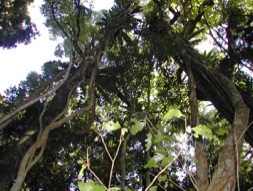
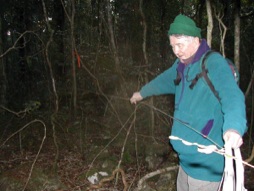
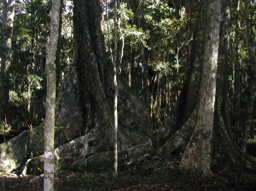
Syd Curtis at Lamington National Park, Queensland, setting up a long lead to his microphone to record the lyrebird "George."
Athanasius Kircher's c.1650 transcription in Musurgia universalis.
New Zealand historian and ethnologist Johannes C. Andersen's 1926 transcription of a chaffinch on line 1, a tui on line 2, and a bell-bird on line 3.
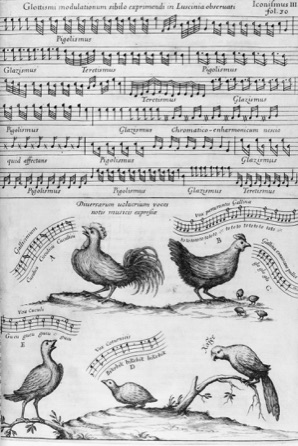
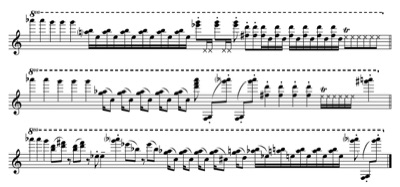
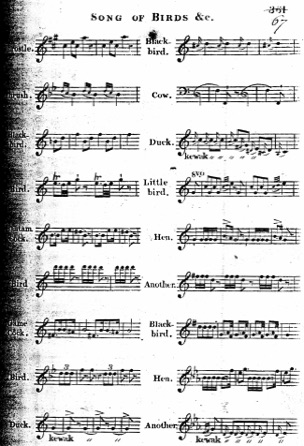
William Gardiner's 1832 transcriptions.
For more on George, including audio and photos, visit:
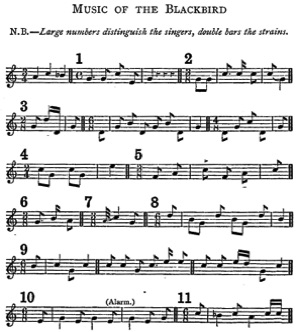
The simplistic 1896 transcriptions of naturalist Charles A. Witchell.
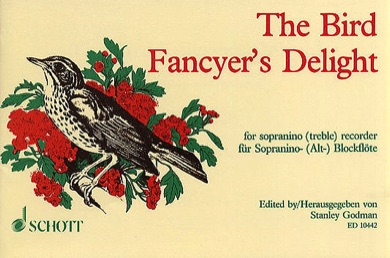
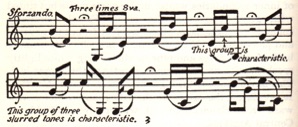
Naturalist F. Schuyler Mathews' 1921 transcription of
a blue-headed vireo.
The Bird Fancyer's Delight (1717), one of the earliest manuals used to train canaries, nightingales, starlings, and other birds given to our sense of musicality, is still in print.
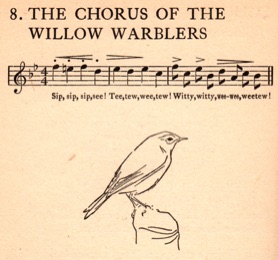
Zoölogist Walter Garstang begins with the timbre of each bird's voice—witness his 1923 willow warbler.
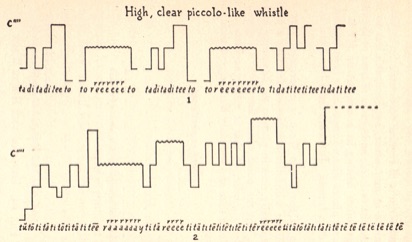
Entomologist and ornithologist Aretas Saunders' 1935 transcription of
a winter wren song.
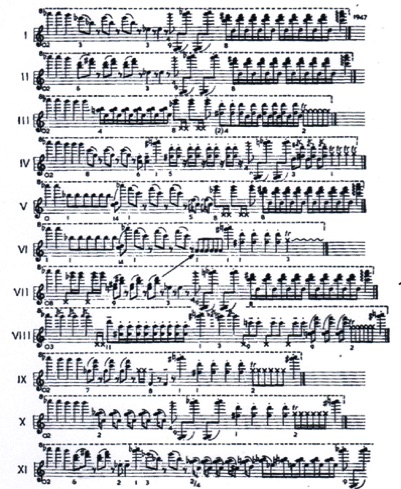
Scientist and musicologist Peter Szoke's 1969 transcription of a hermit thrush song.
Zoölogist Olavi Sotavalta's 1956 transcription of the complex song patterns of two Sprosser nightingales.
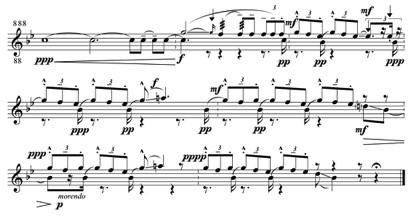

Biologists Hans Stadler and Cornel Schmitt's detailed 1914 transcriptions did not fix pitch.